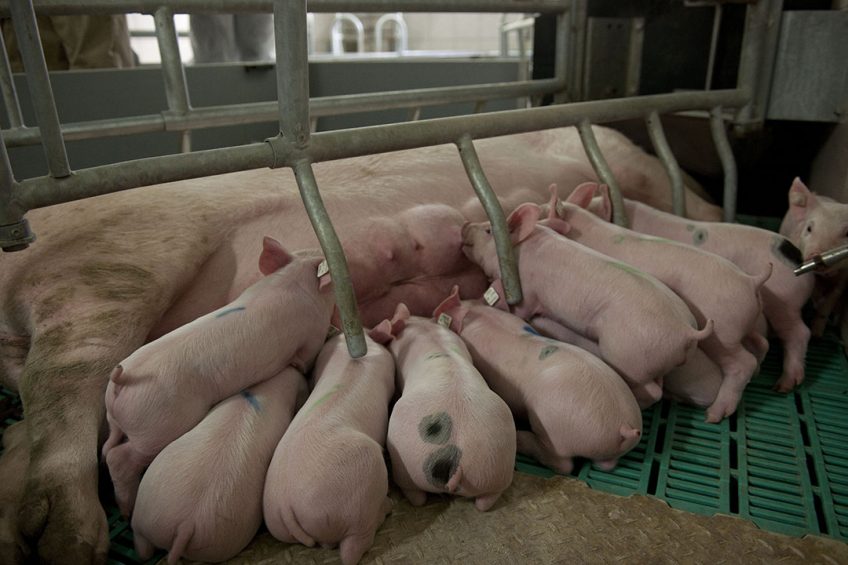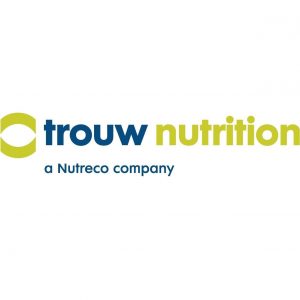4 piglet parameters for lifetime performance

Genetic selection is leading to larger litters of piglets born with lowered levels of physiological maturity. As this trend amplifies an evolutionary strategy in swine favouring survival of the fittest, it presents negative performance and animal welfare implications.
Sow Peripartal Syndrome is a complex web of interactions affecting sows and piglets during the peripartal period. At least four parameters are present at birth that can ultimately determine piglets’ lifetime performance. The following is an update on research underway to managing the syndrome.
 Alive at birth
Alive at birth
While genetic selection has increased the total number of pigs per litter, the number of pigs born alive has not increased at the same pace. Among stillborn piglets, 75% die during farrowing, with asphyxia being the most common cause of death. Risk factors associated with stillbirths include prolonged farrowing, birth order, birth weight and intra-uterine growth retardation. While traditional strategies to reduce the number of stillborn piglets have focused on supervision and intervention during the farrowing process. Trouw Nutrition research is focusing on changes occurring throughout all phases of the reproductive cycle which may affect the number of piglets born alive. For example, as most stillborn piglets died during the farrowing process, we are finding solutions to make piglets more resilient through the challenging farrowing process.
 Adequate birth weight
Adequate birth weight
A piglet’s birth weight significantly affects survival and weight gain up until slaughter. For example, researchers found piglets with a birth weight of 1 kg showed a survival rate of 94%, compared to just 50% for piglets with a birth weight below 1 kg. In addition, piglets with a birth weight of 1.5 kg were shown on average to be 4 kg heavier at 9 weeks of age and reached slaughter weight one week earlier compared to their counterparts weighing 1 kg at birth. Multiple factors leading up to farrowing can affect piglets’ birth weight. One factor is the degree of back fat change throughout the reproductive cycle of a sow.
Research by Dr Anne Wientjes, Wageningen University, the Netherlands, showed variation in birth weight was reduced when sows lost only 2 mm of back fat compared to sows losing 5 mm of back fat in the previous three-week lactation period. Other factors that may affect birth weight include vascularisation of the placenta and uterine blood flow, as well as a sow’s protein intake during gestation. Variation in birth weight within a litter is determined during the first month of gestation and seems to be determined by the variation in placental size. Genetics may explain some of the variation. Researchers are also focusing on how to address physiological immaturity as low birth weight is not a sole factor inhibiting optimal performance.
Figure 1 – Mortality among piglets consuming insufficient colostrum compared to pigs receiving sufficient colostrum intake.

 Adequate colostrum intake
Adequate colostrum intake
A critical component in a piglet’s diet, colostrum delivers nutrients, maternal immunity and many bioactive factors key to tissue and organ development in piglets. Colostrum intake has been linked to positive associations with a piglet’s weight at six weeks of age and at time of slaughter. The amount of colostrum intake has been shown to affect pre-weaning mortality. Mortality averaged four-to-five times higher among piglets consuming insufficient colostrum compared to pigs receiving sufficient colostrum intake. It’s been shown multiple times that over 30% of piglets do not get sufficient amounts of colostrum.
One factor affecting colostrum intake is the sow’s ability to produce sufficient colostrum. As sows produce larger litters, this challenge may be exacerbated. Total colostrum production by the sow is not related to number of liveborn piglets. It is as if the sow does not know beforehand how large her litter will be and as such cannot adapt her colostrum production to it. It is known that the amount of functional mammary tissue is a determinant for a sow’s milk production, and the same is most likely true for total colostrum production.
A second factor influencing colostrum intake is the piglet’s ability to suckle in the neonatal period, partly determined by piglet vitality at birth. Oxygen deficiency (hypoxia) by a difficult farrowing process, has been shown to be a risk factor for too low colostrum intakes. Considering neonatal piglets, a cold environment can trigger hypothermia and -glycemia, which negatively impact vitality and colostrum intake.
Sow nutrition also comes into play. Well-designed peripartal feeding strategies have been shown to increase the sow’s total colostrum production, but also specific nutrients can play their role as the availability of certain n-3 PUFA’s in the sow’s diet have in some cases affected piglet vitality at birth.
Trouw Nutrition research is evaluating various pathways that could improve a sow’s ability to produce colostrum and milk as well as how proper nutrients can help manage challenges such as constipation in the sow.
 Adequate vitality
Adequate vitality
Vitality affects a piglet’s chance to be competitive at the udder, start suckling and maintain body temperature. Hypoxia and splayleg have been shown to negatively affect colostrum intake. From a timing perspective, research has shown that piglets who began suckling within 30 minutes following birth had a pre-weaning mortality rate of 6%, compared to a 21% mortality rate for pigs that initiated suckling more than one hour after birth. While hypoxia is a common cause of stillbirth, mild levels of hypoxia can compromise vitality among pigs born alive.
Piglet vitality thus seems to be a determinant factor for lifetime performance but in itself is affected by many other factors. Trouw Nutrition understands the importance of piglet vitality in the neonatal period and aims to improve it by tackling the underlying causes resulting in improved profitability without increasing labour.
From life start to the prenatal phase Trouw Nutrition scientists seek to understand the root causes contributing to problems with each parameter and develop structural solutions. The insights are informing approaches to support performance even prior to gestation – for example, follicular development in the sow, as well as optimising a piglet’s development during the first months of gestation.
References available on request.
Author: Ruben Decaluwe, swine technical manager, Trouw Nutrition











